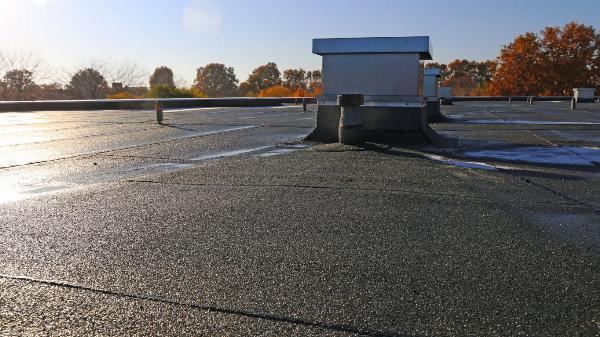 Topic Cluster Planning – Boost Topical Authority Like a Pro!
Topic Cluster Planning – Boost Topical Authority Like a Pro!
"The Importance of PLCs in Environmental Monitoring Systems"
Written by jack » Updated on: June 17th, 2025

In today’s industrial world, environmental monitoring has become increasingly important due to growing concerns about pollution, sustainability, and regulatory compliance. From tracking air quality to monitoring water levels, environmental monitoring systems are essential in safeguarding both ecosystems and human health. A key tool in managing these systems efficiently is the use of Programmable Logic Controllers (PLCs). PLCs are durable, reliable, and adaptable devices that enable precise monitoring, control, and data logging. This article examines the role of PLCs in environmental monitoring and highlights specific PLC models like the OMRON CV500-PS211 and 140CPU67060.
Key Benefits of PLCs in Environmental Monitoring
Automation and Efficiency
PLCs play a crucial role in automating environmental monitoring, reducing the need for constant human oversight. Automated systems can monitor a variety of environmental parameters, such as temperature, humidity, pollution levels, and water quality. By using PLCs, industries can ensure continuous monitoring, which is vital for adhering to environmental regulations.
Real-Time Data Processing
PLCs are capable of processing data from multiple sensors in real time, providing immediate feedback on environmental conditions. This real-time data is invaluable for making quick decisions to prevent environmental damage. For instance, a PLC can trigger an alert if pollution levels in water exceed safe thresholds, enabling timely action to mitigate risks.
Data Logging and Reporting
Environmental monitoring requires extensive data logging to track trends and generate reports for analysis and compliance purposes. PLCs can store historical data and generate detailed reports, making it easier to monitor long-term changes in environmental conditions. These records are vital for environmental audits, research, and ensuring compliance with regulations.
Remote Monitoring and Control
Modern PLC systems allow for remote monitoring, enabling operators to access environmental data from anywhere in the world. This feature is particularly beneficial for monitoring systems in remote or hazardous locations, such as oil rigs or mining sites, where physical access may be difficult or dangerous.
The Role of OMRON CV500-PS211 in Environmental Monitoring
The OMRON CV500-PS211 is a high-performance PLC designed to manage complex automation tasks. Known for its versatility and reliability, it is an excellent choice for environmental monitoring systems. The PLC offers a wide range of I/O options, allowing it to interface with various environmental sensors and monitor multiple parameters. When integrated with real-time data acquisition systems, the OMRON CV500-PS211 offers precise control over environmental variables. Its compact design and scalability make it suitable for applications ranging from small monitoring stations to large, interconnected systems.
To learn more about the OMRON CV500-PS211 PLC, visit the OMRON CV500-PS211 Controller page.
Why the 140CPU67060 is Ideal for Environmental Monitoring
The 140CPU67060, part of Schneider Electric's Modicon range, is another highly capable PLC for environmental monitoring. It is known for its high processing power and flexibility, making it ideal for managing complex control processes that are often required in environmental systems. Whether monitoring air quality or managing water treatment facilities, the 140CPU67060 can handle sophisticated data analysis and response tasks with ease.
This PLC is designed for continuous, reliable operation, even in harsh environmental conditions, making it perfect for demanding applications. The 140CPU67060 also supports remote connectivity, enabling operators to monitor and control environmental systems from various locations.
To explore more about the 140CPU67060 PLC, visit the 140CPU67060 Controller page.
The Impact of Environmental Monitoring on Sustainability
Environmental monitoring is crucial for advancing sustainability efforts. With an increasing emphasis on sustainable practices, businesses must manage their resources efficiently. PLCs assist in optimizing energy use, reducing waste, and ensuring compliance with environmental standards. These systems monitor various environmental factors such as air quality, water consumption, and waste production, providing valuable data to improve sustainability practices.
Conclusion
PLCs are fundamental components of modern environmental monitoring systems, offering automation, reliability, and precision. By utilizing PLCs like the OMRON CV500-PS211 and 140CPU67060, businesses and government agencies can efficiently monitor a wide range of environmental parameters, ensuring compliance with regulations and enabling swift responses to environmental issues. PLC-based solutions empower industries to better manage their environmental impact, protect natural resources, and contribute to ecosystem sustainability.
Note: IndiBlogHub features both user-submitted and editorial content. We do not verify third-party contributions. Read our Disclaimer and Privacy Policyfor details.
Copyright © 2019-2025 IndiBlogHub.com. All rights reserved. Hosted on DigitalOcean for fast, reliable performance.











